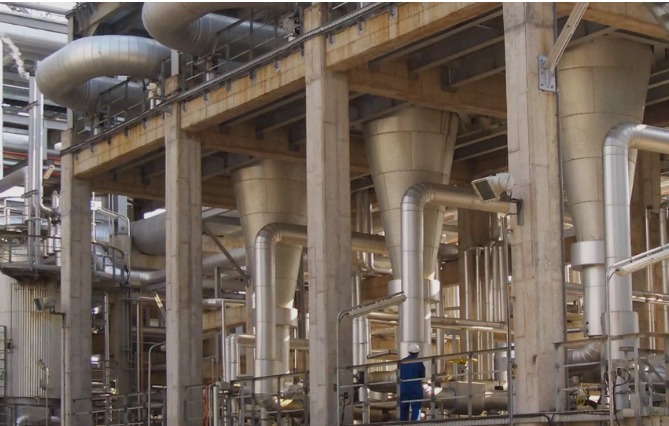
KREBS® Cyclones for industrial applications
KEY BENEFITS
- Finer, sharper separation at high capacities
- Capability to handle extreme conditions and materials
- Custom Design
- Accurate separation based on performance prediction
- Lowered operating cost for downstream equipment
Putting our cyclone and separation technology to work for you
Our KREBS® cyclones use advanced gMAX® technology to lay the foundation for your separation process. Because we know that no two plants are identical, our cyclones are fully customisable for your unique process requirements. With this level of technology and customisation, one inexpensive piece of equipment delivers proven, durable and reliable operation for maximum solids recovery and at the same time provides unmatched protection of downstream operations.
WHAT WE OFFER
An elegant solution for industrial separation
Cyclones work simply and effectively to simultaneously perform separation duties and protect downstream equipment.
A cyclone, also called a hydrocyclone, or separator is a device with no moving parts that uses centrifugal force for separation. A slurry enters the cyclone through an inlet and centrifugal force causes it to spin. Lighter material moves to the centre of the equipment and then out of the overflow (top), while heavier material moves to the outer wall and down through the underflow (bottom).
Industrial processes use cyclones to concentrate slurries, classify solids in liquid suspensions, remove grit from liquids and wash solids. These separation needs are common in conjunction with thickeners, clarifiers and strainers.
Equipment such as centrifuges, filters and screens experience heavy wear when the full classification burden rests on them. Wise managers protect these more expensive pieces of equipment with a long-lasting cyclone that pre-treats the feed with an initial separation stage. This step improves the performance and decreases the operation cost of downstream equipment.
Cyclones can perform ultrafine separations and handle a large volume with high solids loading. With no moving parts or external power requirements, they operate continuously with few needs for maintenance or adjustments.
